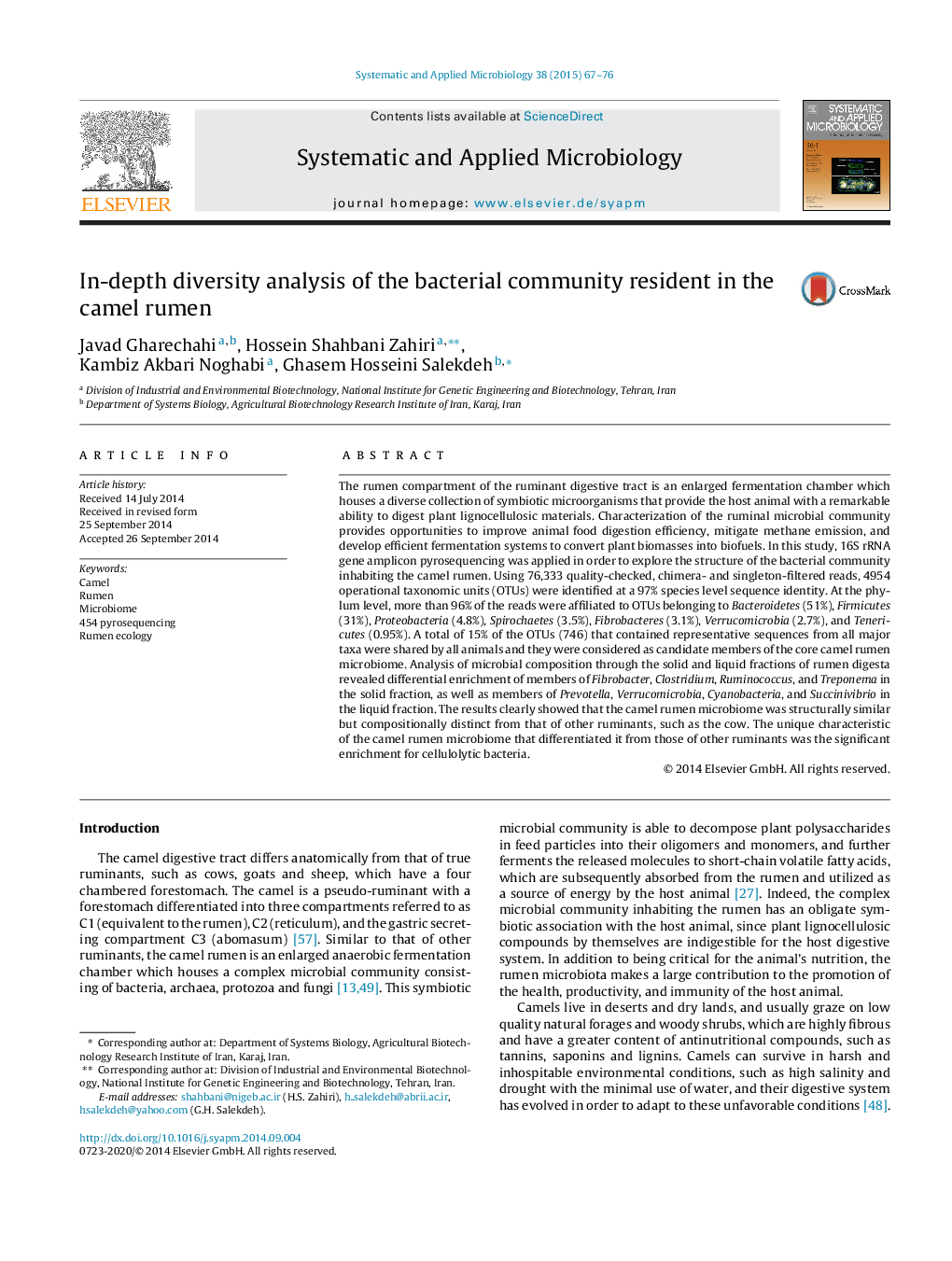| Article ID | Journal | Published Year | Pages | File Type |
|---|---|---|---|---|
| 2063042 | Systematic and Applied Microbiology | 2015 | 10 Pages |
The rumen compartment of the ruminant digestive tract is an enlarged fermentation chamber which houses a diverse collection of symbiotic microorganisms that provide the host animal with a remarkable ability to digest plant lignocellulosic materials. Characterization of the ruminal microbial community provides opportunities to improve animal food digestion efficiency, mitigate methane emission, and develop efficient fermentation systems to convert plant biomasses into biofuels. In this study, 16S rRNA gene amplicon pyrosequencing was applied in order to explore the structure of the bacterial community inhabiting the camel rumen. Using 76,333 quality-checked, chimera- and singleton-filtered reads, 4954 operational taxonomic units (OTUs) were identified at a 97% species level sequence identity. At the phylum level, more than 96% of the reads were affiliated to OTUs belonging to Bacteroidetes (51%), Firmicutes (31%), Proteobacteria (4.8%), Spirochaetes (3.5%), Fibrobacteres (3.1%), Verrucomicrobia (2.7%), and Tenericutes (0.95%). A total of 15% of the OTUs (746) that contained representative sequences from all major taxa were shared by all animals and they were considered as candidate members of the core camel rumen microbiome. Analysis of microbial composition through the solid and liquid fractions of rumen digesta revealed differential enrichment of members of Fibrobacter, Clostridium, Ruminococcus, and Treponema in the solid fraction, as well as members of Prevotella, Verrucomicrobia, Cyanobacteria, and Succinivibrio in the liquid fraction. The results clearly showed that the camel rumen microbiome was structurally similar but compositionally distinct from that of other ruminants, such as the cow. The unique characteristic of the camel rumen microbiome that differentiated it from those of other ruminants was the significant enrichment for cellulolytic bacteria.
